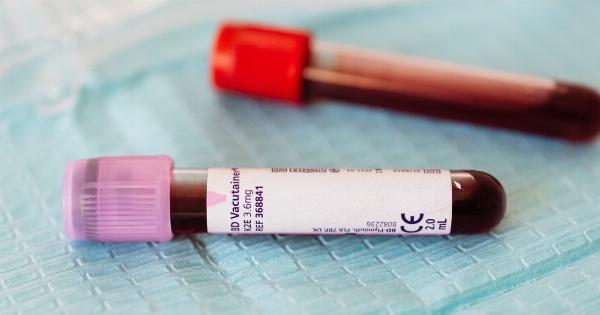Thrombosis is a silent killer that affects millions of people worldwide. It is a condition in which blood clots form in the circulatory system and can lead to life-threatening complications if left untreated.
Unfortunately, lack of awareness about this condition often results in late diagnosis and an increased risk of mortality. In this article, we will explore the dangers of thrombosis, the symptoms to watch out for, and the importance of raising awareness about this preventable condition.
What is Thrombosis?
Thrombosis is the formation of blood clots (thrombus) within blood vessels, obstructing the flow of blood. This condition can occur in both arteries and veins, leading to different complications depending on the affected area.
Arterial thrombosis: When a blood clot forms in an artery, it can prevent blood and oxygen from reaching vital organs, such as the heart or brain.
This can result in heart attacks or strokes, which are life-threatening conditions requiring immediate medical attention.
Venous thrombosis: This occurs when a blood clot forms in a vein, usually in the legs. If left untreated, the clot can travel to the lungs and cause a pulmonary embolism, which can be fatal.
Common Types and Causes of Thrombosis
Thrombosis can manifest in various forms, each with its own set of causes and risk factors. Some common types of thrombosis include:.
1. Deep Vein Thrombosis (DVT)
DVT is the formation of blood clots in deep veins, most commonly in the legs. Immobility, such as prolonged bed rest or sitting for long periods, is a known risk factor for DVT.
Other contributing factors include obesity, pregnancy, smoking, and certain medical conditions or medications that affect blood clotting.
2. Pulmonary Embolism (PE)
If a blood clot from the legs dislodges and travels to the lungs, it can lead to a pulmonary embolism. PE is a critical condition that requires immediate medical attention.
Symptoms may include sudden difficulty breathing, chest pain, coughing up blood, and rapid heart rate.
3. Coronary Thrombosis
Coronary thrombosis occurs when a blood clot forms in the arteries that supply blood to the heart. This can cause partial or complete blockage, leading to a heart attack.
Risk factors for coronary thrombosis include smoking, high blood pressure, high cholesterol levels, and a sedentary lifestyle.
4. Cerebral Thrombosis
Cerebral thrombosis is the formation of a blood clot in the brain’s arteries, potentially leading to a stroke. Risk factors for cerebral thrombosis include high blood pressure, diabetes, smoking, and a family history of stroke.
Recognizing the Symptoms of Thrombosis
Early recognition and prompt treatment of thrombosis can significantly improve patient outcomes. However, the lack of awareness about its symptoms often leads to delayed diagnosis and increased risks. Some common symptoms of thrombosis include:.
1. Swelling and Pain
In cases of DVT, affected limbs may become swollen, painful, and warm to the touch. This swelling usually occurs in one leg, but it can happen in both.
2. Shortness of Breath
A sudden onset of shortness of breath, especially accompanied by chest pain or coughing up blood, may indicate a pulmonary embolism.
3. Chest Pain and Discomfort
Coronary thrombosis can cause chest pain or discomfort, often described as a crushing sensation or pressure in the chest. This pain may radiate to the arms, neck, jaw, or back.
4. Speech Difficulties and Weakness
In cases of cerebral thrombosis, individuals may experience sudden difficulty speaking, drooping of facial muscles, and weakness or paralysis on one side of the body. These symptoms indicate a possible stroke.
Prevention and Treatment Options
While thrombosis can be life-threatening, there are several preventive measures and treatment options available:.
1. Lifestyle Modifications
Adopting a healthy lifestyle can significantly reduce the risk of thrombosis. Regular exercise, maintaining a healthy weight, avoiding smoking, and reducing sedentary behavior can all contribute to better circulatory health.
2. Medications
Medical professionals may prescribe blood-thinning medications, such as anticoagulants or antiplatelet drugs, to reduce the risk of blood clot formation. It is crucial to follow the prescribed dosage and regularly monitor blood clotting times.
3. Compression Stockings
For individuals at risk of DVT, wearing compression stockings can help promote blood flow and prevent clot formation in the legs. These stockings apply pressure to the lower limbs, reducing the likelihood of stagnation and clotting.
4. Surgical Interventions
In some cases, surgical interventions may be necessary to remove or bypass blood clots. These procedures are typically performed in critical cases or when other treatment options have proven ineffective.
Raising Awareness for Thrombosis
Despite the high prevalence of thrombosis and its potentially fatal consequences, there remains a lack of awareness among the general population.
Several initiatives can help raise awareness and educate individuals about the risks and symptoms of thrombosis:.
1. Public Health Campaigns
Public health campaigns can play a vital role in disseminating information about thrombosis. Government bodies, healthcare organizations, and nonprofits should collaborate to develop targeted campaigns that reach a wide audience.
2. Education in School and Workplaces
Introducing thrombosis education in school curriculums and workplace training programs can help individuals recognize the symptoms and risk factors early on.
Education regarding preventive measures can also empower individuals to take proactive steps towards better circulatory health.
3. Support Groups and Charitable Organizations
Support groups and charitable organizations can provide platforms for individuals affected by thrombosis to share their experiences, find emotional support, and access valuable resources.
These groups can also advocate for better healthcare policies and raise funds for further research.
Conclusion
Thrombosis is a serious condition that affects countless individuals globally. From deep vein thrombosis to pulmonary embolism, this silent killer can have severe consequences if left untreated.
Raising awareness about the symptoms, risk factors, and available preventive measures and treatment options is crucial to improving patient outcomes and reducing mortality rates. By educating the public, healthcare professionals, and policymakers alike, we can take significant steps towards preventing thrombosis and saving lives.




























